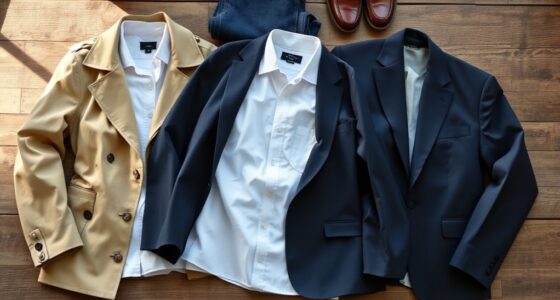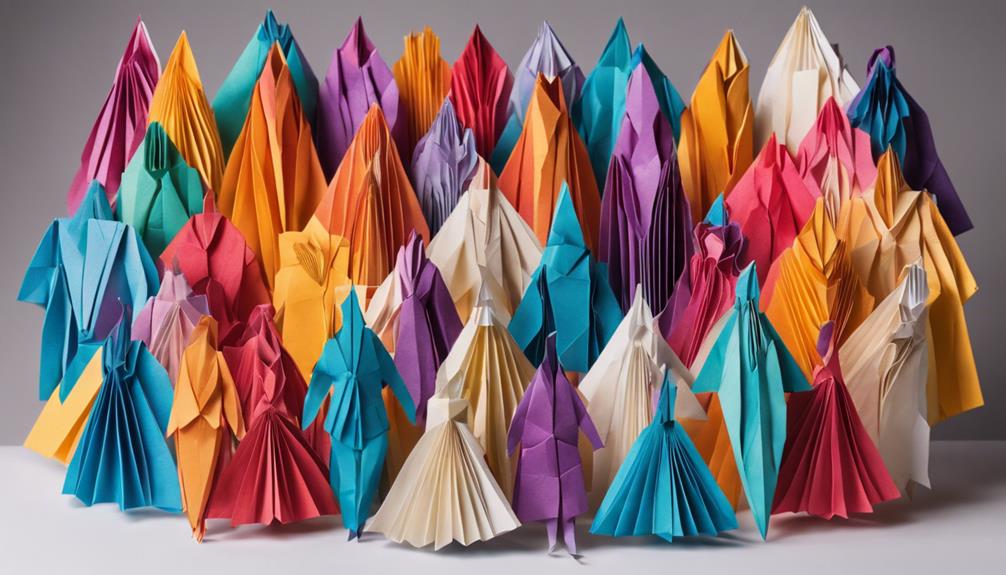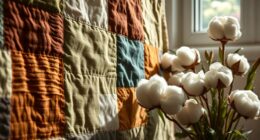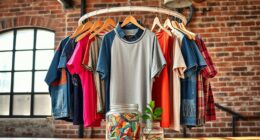Innovative materials like mushroom leather and vegan textiles are revolutionizing industries by offering sustainable, eco-friendly options. Mushroom leather, made from fungi’s root structures, reduces reliance on harmful resources like trees and water while supporting responsible production. Vegan textiles, derived from plant fibers or recycled plastics, minimize environmental impact and promote renewable resources. These advances encourage responsible manufacturing and eco-conscious choices. To explore how these materials are shaping a greener future, keep discovering the possibilities.
Key Takeaways
- Mushroom leather is produced from fungal mycelium, offering a sustainable, durable alternative to traditional leather.
- Vegan textiles are made from renewable plant-based fibers like hemp, bamboo, or recycled plastics, reducing environmental impact.
- Both materials promote eco-friendly manufacturing by lowering resource consumption, water use, and chemical pollution.
- These innovative options support responsible sourcing, waste reduction, and help decrease reliance on environmentally harmful resources.
- Increasing accessibility and affordability of mushroom leather and vegan textiles encourage industry adoption of sustainable practices.
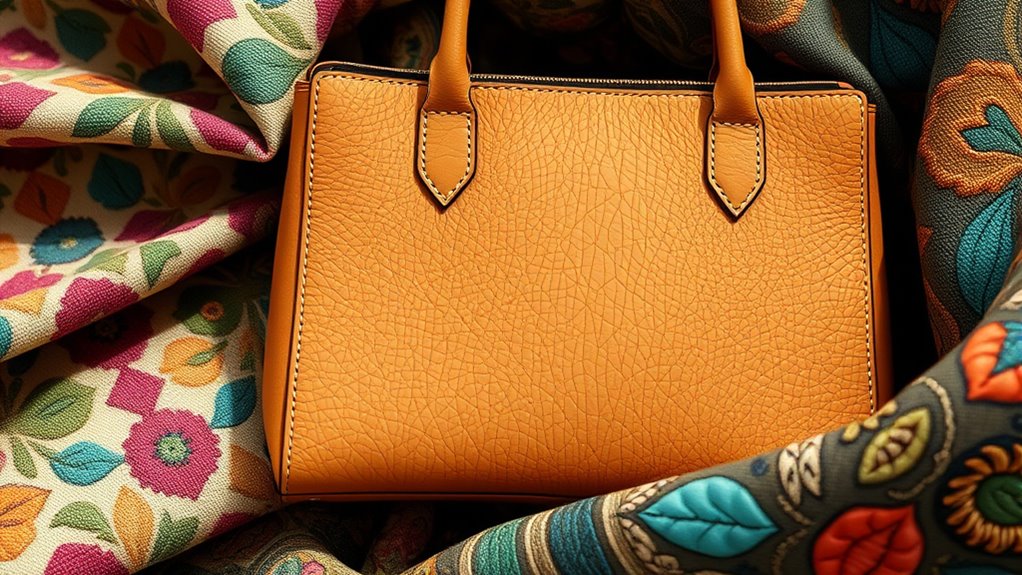
Have you ever wondered how new materials are transforming the world around us? It’s an exciting time, especially as innovative options like mushroom leather and vegan textiles gain popularity. These materials aren’t just trendy; they’re reshaping industries by prioritizing sustainable sourcing and eco friendly production. Instead of relying on traditional resources, which often harm the environment, these alternatives offer a more responsible way to create the products we love. When you choose items made from mushroom leather or vegan textiles, you’re supporting a shift toward less invasive, more sustainable practices that reduce waste and lower carbon footprints.
Mushroom leather, also known as mycelium leather, is grown from the root structure of fungi. It’s a remarkable example of how nature can be harnessed to produce high-quality, durable materials without contributing to deforestation or excessive water use. This process emphasizes sustainable sourcing, meaning the raw materials are cultivated with minimal environmental impact. Because it’s made from renewable resources, mushroom leather supports eco friendly production methods, such as using less energy and generating fewer pollutants. As a consumer, your choice to opt for mushroom leather helps push industries toward more responsible manufacturing practices, encouraging brands to adopt greener supply chains. Additionally, advancements in sustainable manufacturing are making these innovative materials more accessible and affordable for widespread use.
Vegan textiles, meanwhile, are crafted from plant-based fibers like hemp, bamboo, or recycled plastics. These materials often require fewer resources to produce compared to traditional textiles, and many are harvested or processed in ways that minimize environmental damage. For example, bamboo grows quickly and needs little water or pesticides, making it a sustainable option. When companies prioritize eco friendly production in creating vegan textiles, they often implement cleaner dyeing techniques and reduce chemical use. Supporting these products means endorsing a system that values renewable resources and reduces reliance on animal products, which can have significant ecological benefits.
Frequently Asked Questions
How Sustainable Are Mushroom Leather and Vegan Textiles Long-Term?
Mushroom leather and vegan textiles are quite sustainable long-term because they reduce environmental impact by requiring fewer resources and producing less waste. You might find that cultural acceptance is growing as more people embrace eco-friendly options. However, consider that some materials still face challenges like scalability and durability. Overall, these innovations offer promising sustainability, but you should stay informed about ongoing developments to guarantee they meet your eco-conscious values.
What Are the Cost Differences Compared to Traditional Materials?
You’ll find that the cost comparison between mushroom leather, vegan textiles, and traditional materials varies. Typically, mushroom leather and vegan textiles start at a higher market pricing due to newer production methods and limited supply. However, as demand rises and manufacturing scales up, prices are expected to decrease. While initially more expensive, these innovative materials might become more cost-effective over time, offering a sustainable alternative worth considering.
Can Mushroom Leather Be Recycled or Biodegraded Easily?
Mushroom leather isn’t easily biodegradable due to biodegradability challenges, but it can often be recycled through specific processes designed for bio-based materials. You should know that recycling options are still developing, and some methods may not be widely available. While it offers eco-friendly benefits, you’ll need to contemplate these limitations when choosing mushroom leather, as its end-of-life options are currently less straightforward than traditional materials.
Are There Any Health Concerns With Vegan Textile Production?
Think of vegan textile production as steering a river—smooth in some spots, choppy in others. While it generally offers better chemical safety and fewer allergenic risks than traditional fabrics, concerns remain. Some dyes and finishing chemicals may still pose health issues, so it’s essential to choose brands that prioritize safe, non-toxic processes. Staying informed helps you enjoy eco-friendly fashion without compromising your well-being.
How Do These Materials Perform in Extreme Weather Conditions?
You’ll find that mushroom leather and vegan textiles generally offer decent temperature resilience, keeping you comfortable in both hot and cold conditions. They also tend to have good moisture resistance, helping to prevent sweat and water absorption. However, extreme weather might challenge their durability; for instance, prolonged exposure to intense heat or heavy rain could degrade their performance. Always check specific product properties for best results in harsh environments.
Conclusion
As you explore these innovative materials, imagine walking into a fashion boutique where a single mushroom leather bag sparks a revolution—showing that sustainability can be stylish. Just like this bag, the shift to vegan textiles isn’t just about trend; it’s about planting seeds for a greener future. With more brands embracing these materials, you’re part of a movement that transforms industry standards, proving that eco-friendly choices can be both beautiful and impactful.



